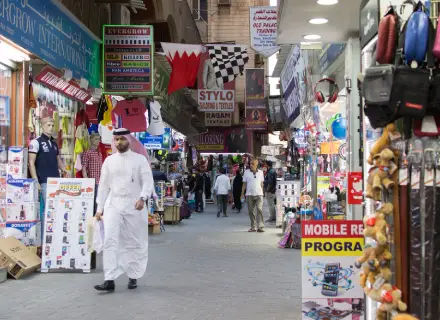According to official statistics, Bahrain’s GDP grew by 2.1% annually in the third quarter of 2024, propelled by robust performance in its non-oil industries.
The Ministry of Finance and National Economy reports that non-oil sectors accounted for 86.4% of real gross domestic product during the period, growing by 3.9%.
The information and communication sector, which grew 11.9% annually thanks to higher mobile and internet subscribers, was one of the major contributors.
Driven by further economic diversification, Bahrain’s third-quarter growth reflects favourable trends throughout the Gulf Cooperation Council, with Qatar’s GDP increasing by 2% and Saudi Arabia’s by 2.8%.
Despite these improvements, Bahrain’s economy was beset by difficulties in the oil sector, where operations shrank by 8.1% annually, which led to a 0.9% drop in nominal GDP.
The non-oil industries, on the other hand, did well. The nation’s insurance and financial sectors grew by 5.8%, while electronic payments transfers rose by 13.7% annually.
Higher production at the Bapco Refinery helped manufacturing grow by 4.2%, while a notable increase in e-commerce transactions supported wholesale and retail trade’s 2.1% growth.
On the other hand, the oil industry had challenges as a result of the Abu Sa’afa field’s maintenance operations and the drop in oil prices worldwide. As a result, oil activity decreased by 8.1% in real terms year over year, while the average daily oil production from the Abu Sa’afa field decreased by 11.5%.
The outcomes of trade and investment operations were likewise not entirely consistent. Due in significant part to a 19.2% drop in the value of oil exports, the current account surplus shrank by 54.5% year over year to 148.6 million Bahraini dinars (USD 394.2 million).
However, non-oil exports grew by a moderate 1.1%, with base metals and mineral goods accounting for the majority of the growth. The stock of foreign direct investment rose by 3.5% annually to 16.5 billion dinars. With 67.3% of all foreign direct investments, the finance and insurance industry continued to be the largest contributor.
Throughout the quarter, development projects in a number of areas kept moving forward. The largest capital investment in Bapco’s history, the Bapco Modernisation Programme, increased refinery capacity by 42% when it was finished in December.
Bahrain’s hospitality options were improved in the tourism sector with the opening of the “Hawar Resort by Mantis” and four additional five-star hotels. A new rehabilitation facility was built at Al Jasra for the healthcare industry, and Bahrain’s Industrial Strategy included the establishment of the Aluminium Downstream Industries Zone.
Financial and monetary indicators showed encouraging patterns. With the help of a 15.6% rise in government deposits, the broad money supply grew by 6.1 percent annually. Personal loans accounted for about half of the total loans offered by retail banks, which increased by 4.9% annually. The number of Bahrainis working in the public and private sectors increased by 1.7%, to 153,842, according to the labour market.
Over 13,679 Bahrainis were trained, and the Economic Recovery Plan’s recruitment goal for 2024 was achieved at 98%.
With the Bahrain All Share Index ending the third quarter at 2,012.77 points, up 3.8% year over year, Bahrain’s capital markets also did well. With a 10.1% increase, the Bahrain Islamic Index showed even more robust growth. The market capitalisation reached 7.8 billion dinars, a 2.4% gain.
According to the Economic Freedom of the World study, Bahrain’s economy ranked 34th globally, maintaining its status as the freest in the Arab world. In the IMD World Digital Competitiveness Ranking, the country also rose eight spots to 30th place, demonstrating notable advancements in the use and adoption of digital technology.

